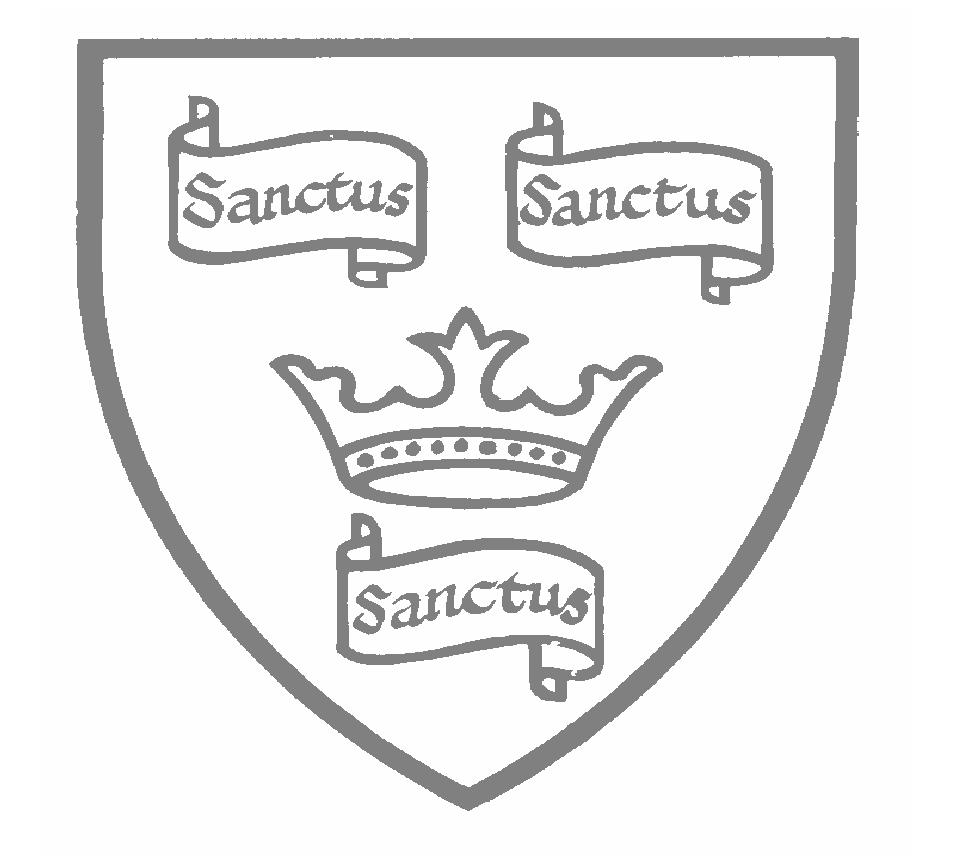Summary of Key Risk Management and Mitigation Actions

Detailed plans for a safe return to school
General Principles
- All children are expected to attend school full time from 3rd September.
- Children to come to school in school uniform
- We will operate in class bubbles. These children will not mix with other bubbles.
- Children do not have to observe social distancing between each other although there should be no contact between children. Children should maintain 1 metre plus social distancing from all staff
- Charter created for and with the children and adults in school –
(Include instructions how to line up, use of toilet, moving around the classroom etc.) Charter re-visited and modelled throughout the day.
6 . Reduced timetable / temporary exclusion / inclusion / isolation / contact parents considered if necessary if children are acting in a way staff or other pupils are put at risk
7. All staff have input into risk assessments and control measures with opportunity to inform and influence their content.
8. All elements of risk assessment are subject to constant review and revision in the light of experience, implementation and any new guidance and advice.
Arriving at school/Leaving school
- Allocated gate for children to enter school (upper school gate is beside Y5, lower school gate is by the playground) - clearly marked with a teacher or TA from each class there at the start of the school day to ensure social distancing, to avoid congestion and one child entering school at a time. As a child arrives they are sent straight to class where the other staff member from that class will be in each classroom ready to receive the children and send to wash hands and use cloakroom.
- Markers outside the school for the children and parents to wait - 2 metres apart
- Instructions shared re social distancing between families in the morning with parents and children, also via email
- Visitors limited to school during school hours. Visitors to come into school building only when strictly necessary and by appointment, ideally only one at a time. Where possible this should happen outside of school hours and records kept.
- Signage for parents and children displayed outside the school
- Senior Leadership Team members to be on duty to supervise
- Staggered drop off and pick up times for different bubbles.
- Where an adult has to undertake multiple ‘drop off’ and pick up’ they are to liaise directly with school to make arrangements to reduce this and thus reduce congestion outside school.
For small numbers of children who need dropping off outside their allocated class time (e.g. children of childminders) a ‘holding area’ will operate in the hall with seating in class bubbles. These children will enter via the front office.
9. Each class will be released at a set time to parents who will be waiting, socially distanced, outside school for the upper school (Y5 and 6) and on the playground for the lower school (Y3 and 4.) One adult only to drop off/collect. Parents should vacate the area as soon as they have collected their child.
Classrooms
- Set seating so children use same desk, only use their own trays and children have water bottles on their desk to prevent unnecessary movement around classrooms.
- Children to wash hands every time they re-enter the building/ classroom
- Staff are assigned to these children and stay with these children throughout the day
- Children sent to lockers/pegs in small groups and are fully supervised to avoid mixing of bubbles. Maximum of 8 children in the cloakroom at any one time.
- Where possible staff to be at front, side or back of the classroom. If close staff to pupil communication is needed – side to side or side and back, not facing child.
- Limit exchange of classroom resources including teachers taking books home. Staff to wash hands before and after handling books. Shared resources cleaned regularly.
- General stationery not to be shared – all children to have folders/ trays with their own resources. These can be left on chairs at the end of each day.
- Improve ventilation in the classroom where possible
- Contact sports will not take place.
- When changing for PE, if girls and boys change separately one group will leave the classroom under adult supervision whilst the other group changes – waiting outside if fine or in common areas if not.
- Lessons planned for individual or paired work (no group work in first instance.)
Movement round school
- Children staying in their classroom and accessing outside from classroom door
- One boy and one girl going to toilet at one time
- Clearly marked system in corridors – corridors are marked with direction of travel, rather than a one way circular route due to the nature of the school building.
- Agree instructions with children concerning going and returning to toilet
- Staff to minimise children’s movement around school and to/from the classroom, using external route wherever possible.
- Limited interaction and sharing of rooms and social spaces. Year group shared areas can be used but bubbles should not be mixed within these areas. These spaces will then be cleaned after each use.
Personal Hygiene
- Hand gel dispenser inside of all classrooms and in ‘key areas’ e.g. office, photocopier, ICT suite
- Hand gel ordered in large quantities
- Extra soap dispensers and re-fills in each classroom
- Extra hand washing bowls in each classroom
- Children hand wash or hand gel on entry to school, before break, after break, before lunch, after lunch, leaving school, using the toilet and any time they cough or sneeze
- Washing hands posters replaced in all washing areas
- Reminders how to wash hands properly – videos and posters and demonstrations by staffHygiene and toilets
- Only one boy and girl allowed in each toilet at a time – clear signage for this. Children knock and check before entering.
- Flexibility for children to go to the toilet during lesson time to avoid congestion at the start of break times.
- Allocated toilets for different groups of children
- Hand gel used after toilet use as well as washing hands
- Extra Signs in toilet re washing hands
- School to maintain high levels of hand sanitiser and soap to ensure we never run out
Playtimes
- Staggered playtimes and lunchtimes and allocated play area in the first instance
- Reduced playtime equipment only used during lunchtime break – hard surfaces and can be easily cleaned
- Staff supervision throughout
- Trim trail can now be used and children to always be in the sight of staff
- Hands washed before going outside to play and immediately afterwards when they come back inside – use of washing up bowls
- Contact sports will not take place.
Lunchtimes
- Children eat in their classrooms
- Children asked to bring packed lunch which will be kept in lockers/on pegs/on or under desks. These can be collected after hands washed.
- Children safely picnic outside whenever possible
- Staggered lunch times
- Allocated lunch time supervisor per bubble
- Externally provided cold box meals brought to the classroom by designated lunchtime supervisor. No hot meals being provided at present.
Resources
- Children asked to bring in a limited amount of own equipment (lunchboxes, bags, coats, hats, books, stationery and phones if required)
- Tubs of resources for individuals if needed – maths cubes etc, which will be cleaned after each use.
- Resources washed/ sanitised in each night and left to dry if not same person using them the next day
- Classrooms and used shared resources cleaned thoroughly with sanitiser every night
- Lessons planned so resources are individual or paired and not shared by the whole group – or on the white board
- Resources on tables ready for lesson and not distributed within the lesson where possible
- Plastic packets (ziplock) bags or trays used for individual resources
- Children encouraged to wash hands / use hand gel on entry to school, before break, after break, before lunch, after lunch, leaving school, using the toilet and any time they cough or sneeze
Social and Emotional needs
- Children to access/ be supported by class teacher and Teaching Assistant in the first instance
- School to offer remote education to pupils who are complying with clinical advice and not able to attend school
- 1 metre plus social distancing emotional and social support available for children who are distressed
- Broad and flexible curriculum to be delivered for first weeks of term to support children’s well-being – slowly increasing the cognitive load
- Staff to have a heightened awareness/ training with regard to the possibility of our children having emotional distress at this time.
- Permanent presence of Designated Safeguarding Leads to oversee concerns
- Use of some Relationship and Health Education units and resources to support children who are struggling
- Specialist emotional support teacher available for 1:1 work for one day a week.
Cleaning routines
- All commonly shared surfaces, door handles, toilets and light switches will be cleaned hourly with disinfectant.
- Clear hourly cleaning timetable for regularly used areas – toilets, classrooms, office, ICT suite to include switches, handles, sinks etc. This is to be reviewed regularly. Checklist in operation.
- PPE – gloves/ aprons will be worn by all cleaning staff
- Some resources will be rotated and left to de-contaminate for 3 days after cleaning to reduce the risk of indirect transmission.
- Classes/year group to have system in place for returning library and school books into boxes where they are left for 3 days before returning to shelves.
- Outdoor play equipment cleaned frequently and only used at lunch time.
First aid, potential case of COVID, behaviour that heightens the risk of infection
- PPE to be worn when administering first aid. This should be done side by side, using verbal instructions where possible.
- First aid to be administered, wherever possible from social distance.
- Reduced timetable / exclusion / inclusion / isolation and contact parents considered if necessary if children’s behaviour puts staff and other pupils at risk until safe behaviour can be guaranteed.
- In the event of a children becoming ill or requiring first aid, the staff member present will phone the office who will come to collect the child and escort them to the isolation room to enable administration of first aid.
- Anyone becomes unwell with a new, continuous cough or a high temperature, or has a loss of, or change in, their normal sense of taste of smell (anosmia),should be sent home and advised to follow the COVID-19: guidance for households with possible coronavirus infection guidance.
- If a child is awaiting collection, they should be moved, if possible, to designated isolation room where they can be isolated behind a closed door, with appropriate adult supervision. A window will be opened for ventilation.
- If they need to go to the toilet while waiting to be collected, they should use the designated separate toilet which will be cleaned and disinfected using standard cleaning products before being used by anyone else.
- PPE should be worn by staff caring for the child while they await collection if a distance of 2 metres cannot be maintained (such as for a very young child or a child with complex needs).
- If a child or group needs to be self-isolated they will have access to remote education
Last updated 25th August 2020
